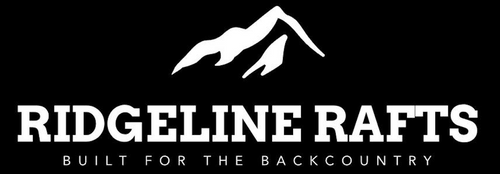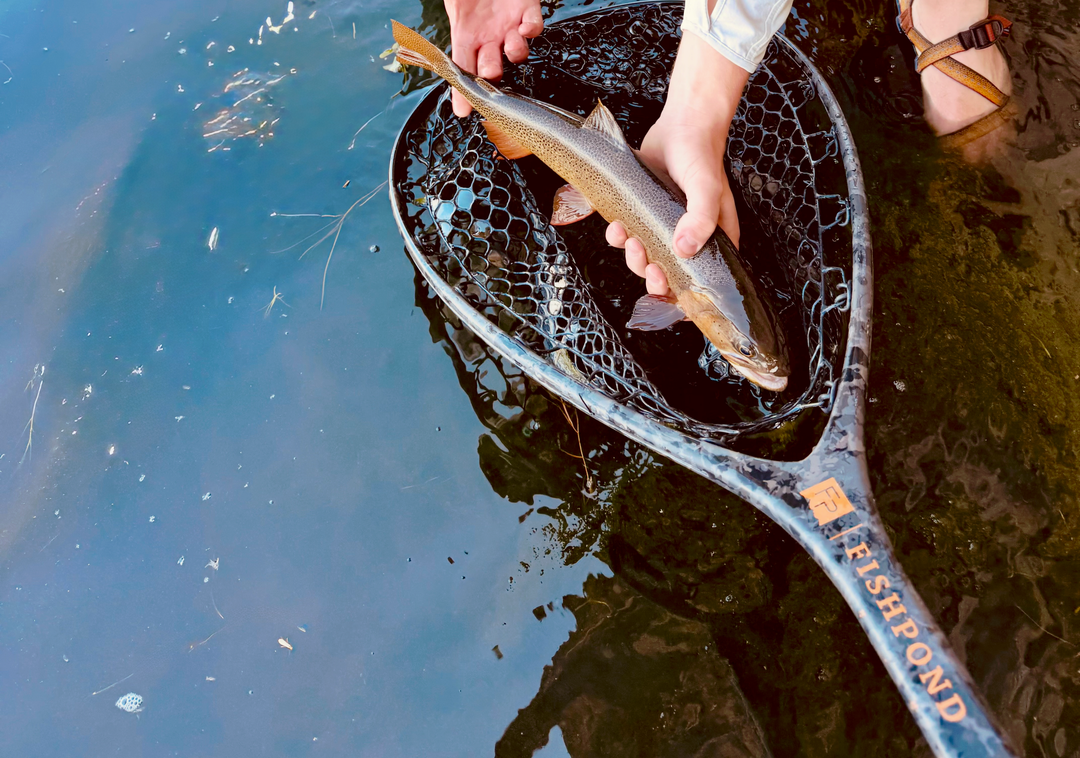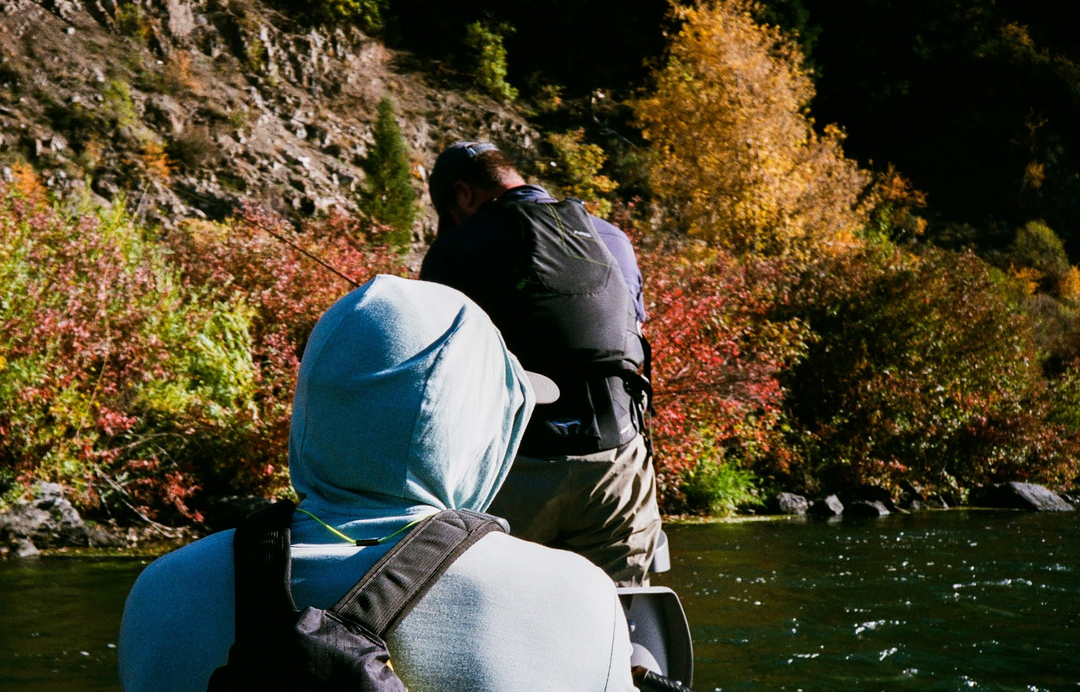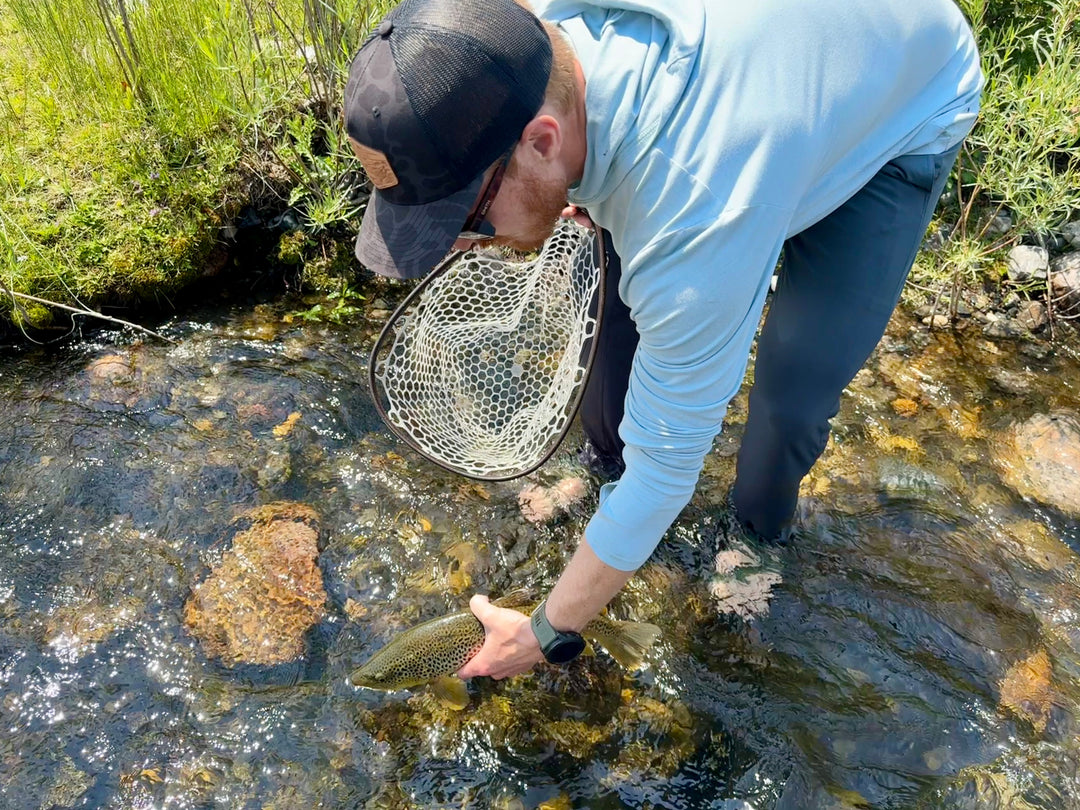What to Look for in an Inflatable Fishing Boat

Choosing the right inflatable fishing boat isn’t just about picking the first model that floats. A well-designed boat opens up access to remote fishing areas, helps you organize equipment efficiently, and enhances your ability to catch more fish and better quality fish. The right setup can turn a casual outing into a serious adventure. Whether you're casting to rising trout on slow water or swinging streamers through fast current, the boat you choose should offer the stability, performance, and features you need to put more fish in the net.
When we say inflatable fishing boat we aren't talking about paddle-powered inflatable kayaks, float tubes, or pontoons/catarafts. We're talking about a fishing raft that has a frame, 2-3 seats, and oars at the most basic level. These types of inflatable boats are by far the best option for fly fishing so that is where we will focus our attention in this post.
Here are some factors to consider when you start shopping for an inflatable fishing boat.
Weight
Weight plays a significant role in the convenience and portability of your inflatable boat. A lightweight design makes it easier to row on the water, carry when needed, and transport with a truck or SUV even if you don't have a trailer. That means more spontaneous outings and better access to hard-to-reach fishing areas. But weight also influences how the boat performs once you're on the water. Too light, and you may sacrifice durability and handling in current or wind.
The right balance depends on your needs. While larger models can carry more equipment and offer more room for a friend or family member they tend to weigh more and more weight=harder to row.
Look at total system weight—including frame, oars, and accessories—not just the raft itself. A thoughtfully constructed raft made with high-end materials can be light and tough, offering performance and longevity over many years of use.
Inflatable Boat Design (Performance on the Water)
If you want to get the best performance from your inflatable fishing boat, you have to get the dimensions right. Length, width, and tube size all work together to determine how well your boat tracks, how stable it feels underfoot, and how safe it is when the water gets pushy. Choosing the wrong combination can lead to a boat that’s hard to row, feels sketchy when standing, or even dangerous in rough water.
Take width, for example. Rafts between 40–56 inches wide with smaller tubes are often marketed for their portability—they're easier to transport, load onto a trailer or into a vehicle, and store in tighter spaces. But while they’re great for quick access and solo trips, they can feel unstable when standing and are more prone to flipping. Their lower volume and narrow footprint make them less capable of handling bigger water, which can create safety issues when currents get strong or waves pick up.
On the other end of the spectrum, overly wide rafts add a lot of extra weight and are significantly harder to row. A wider platform can offer great stability, but at the cost of maneuverability and efficiency on the oars. You’ll spend more energy getting where you want to go, especially with added gear, passengers, or wind.
Tube diameter matters too. Larger tubes increase flotation, improve dry ride height, and give the raft more stability and carrying capacity—but they also add bulk and can limit internal storage space. Length affects tracking and glide: longer boats (10–14 feet) tend to move more efficiently and carry more gear, but may not be ideal in tight streamers or really technical waters.
Ultimately, performance depends on balance. A thoughtfully designed raft can deliver excellent handling, good stand-up stability, and enough space to fish comfortably without compromising "row-ability". For a more technical breakdown of how each dimension affects performance, check out our full article on using physics to understand fishing raft design and intent.
Lifespan
Durability is a key factor that separates budget boats from high-quality inflatable fishing boats. Look at fabric material first. Urethane-coated materials and multi-layer PVC offer serious toughness and resist punctures from rocks, hooks, and abrasive shorelines. Welded seams significantly outlast glued ones, especially in hot climates or when exposed to UV radiation over many years.
An inflatable boat should be built to withstand not only water conditions, but also constant packing, transport, and exposure to the elements. Don’t underestimate how much wear your boat will take from being rolled up, stuffed in a vehicle, or dragged to remote fishing areas. A durable raft isn't just about lasting longer—it's about staying safer and avoiding the hassle of mid-season failures.
Higher-end models may cost more upfront, but they deliver longer service life, better resale value, and fewer equipment-related headaches down the line. Think of your inflatable fishing boat not as a throwaway product but as a long-term investment in your fishing lifestyle.
Warranty
A strong warranty reflects a company’s confidence in their craftsmanship and materials. Look for warranties that cover not only the fabric but also valves, seams, and structural components. A 5 to 10 year warranty is a good benchmark for premium inflatable fishing boats. Just as importantly, make sure the manufacturer offers real customer support. Can you reach a person if something goes wrong?
Warranties protect more than just the product; they protect your adventure. If you're planning big trips or spending significant time on the water, knowing you're covered adds peace of mind. Some companies may offer "limited lifetime" coverage, but always read the fine print to understand exclusions. A good warranty helps you explore confidently and reduces risk in your investment.
What’s Included in the Boat Purchase?
When comparing inflatable fishing boat options, it’s essential to know exactly what comes in the box. Some models ship with a complete package: frame, oars, seat, pump, repair kit, and even accessories like rod holders or anchor systems. Others offer only the basic hull, leaving you to source the rest. Be sure to review what's included before assuming a boat is ready to hit the water.
For serious anglers, having your boat equipped out of the gate means you need to shop less and fish more. Pay attention to frame design too Can you adjust seating or storage layout to suit your fishing style or is the frame fixed and restrictive? Knowing the answers to these questions upfront can save you both time and money.
Make sure you’re comparing apples to apples when looking at price tags, and don’t forget to factor in any additional equipment you'll need to purchase. Most boats aren't created equal so if you're unsure and want to talk to an expert feel free to give us a call or shoot us an email and we're happy to help.
Oars
Oars are often overlooked, but they play a huge role in how your boat handles. Cheap or poorly sized oars can make rowing brutal rather than a smooth experience. You want full-size oars that are strong, light, and matched to your boat's width. Undersized oars won’t generate enough leverage, making it hard to maneuver in current or wind, while overly heavy oars wear you out fast.
Also consider how your oars are mounted. Quality oar locks and towers allow you to customize your rowing position and give you confidence during tricky maneuvers. Investing in high-quality oars pays off not just in performance, but also in safety when navigating changing water conditions.
Make Your First Boat Your Last
Selecting the right inflatable fishing boat is both an art and a science. With the right model, you gain access to waters others can't reach, more space to organize your gear, and the freedom to customize your setup for the type of fishing you love most. From rivers to the occasional lake the possibilities are wide open.
Whether you're out with family or fishing solo, a good inflatable boat turns every trip into an opportunity to explore and connect with your surroundings. Look for a boat that offers a balance of speed, stability, durability, and comfort. Prioritize longevity and remember that investing in quality equipment upfront means fewer headaches down the line.
Ready to discover the inflatable boat that fits your adventure? Review your options carefully, ask questions, and don't settle. The right boat isn’t just a tool—it's a vehicle for years of unforgettable fishing experiences.




